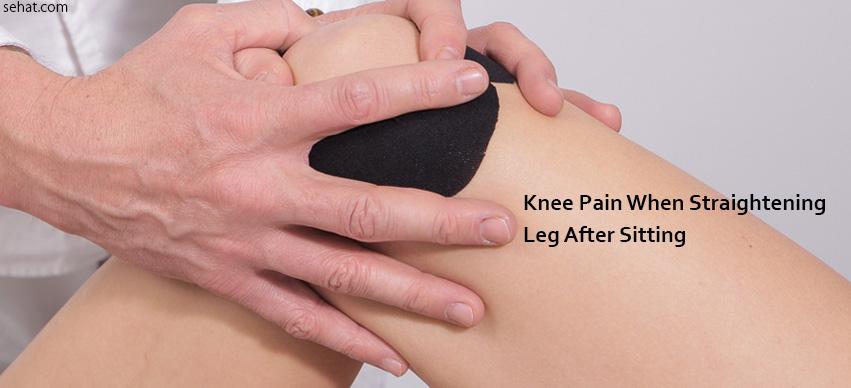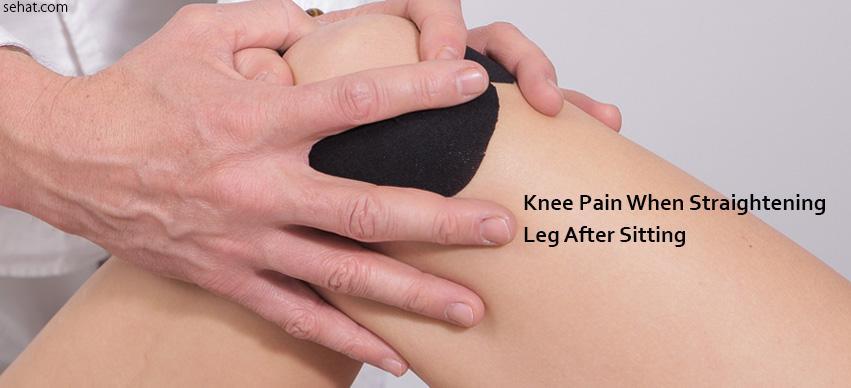How Communities Are Changing the Way We Think About Aging in..
8 Min Read


Healthy knee joints are important for normal walking and bending movements of the legs. The slightest disorder of the knee joints or anything affecting the tendons, ligaments, cartilages, muscles, or joint fluid can cause severe pain while carrying out these normal day-to-day functions.
Knee pain accounts for about one-third of all musculoskeletal problems presenting in an outpatient setting. However mild it may be, knee pain can be disabling enough to restrict daily activities. Although knee pain is often linked to old age, it can occur due to several reasons and can affect any person of any age group or gender. It is also a common complaint among physically active persons like athletes, laborers, and sportspersons.
Causes of knee pain when straightening leg after sitting depend largely upon past and present history and family history of patients. Patient's description of the location, duration, and intensity of pain help in reaching a diagnosis.
Blunt trauma or injury to the knee joint is the commonest cause of knee pain among adolescents and adults. Wear and tear of knee joints is the cause of soreness and stiffness among elderly patients.
| Sr. No. | Cause For Knee Pain | Description | |
| 1. | Patellar Tendonitis(Jumper's Knee) | Inflammation of the patellar tendon which attaches the patella (knee cap) to the shin bone can occur from a sudden increase in activity or blunt injury to the knee. It is also common in patients with flat feet. Signs and symptoms include knee pain and tenderness with difficulty in kneeling down and bending or straightening leg after sitting. | |
| 2. | Subluxation/ Dislocation | It is a partial dislocation of the kneecap from its normal position. Patellar subluxation occurs when the leg is straightened forcefully or as knocked-knees. Signs and symptoms include sensation as if the kneecap has moved out of its position. There may be swelling and pain behind the kneecap on moving the knee. | |
| 3. | Meniscus Tear | Menisci are C-shaped sponge-like structures between the thigh bone and shin bone. They are an integral part of the knee joint as they work as shock absorbers. Any blunt trauma to the knee or spraining can cause a meniscus tear. Symptoms include severe knee pain on straightening the leg. There may be a "popping" noise when the knee moves. | |
| 4. | Posterior Cruciate Ligament Injury | Anterior and posterior cruciate ligaments support the knee joint. Trauma to the posterior cruciate ligament is the commonest cause for this type of ligament injury. Falling on the knee when it is bent is the commonest reason for PCL injury. It is less common compared to other lesions of the knee joint. Signs and symptoms include knee pain and wobbling of knees while walking or weight-bearing. | |
| 5. |
| It is bleeding into the knee joint space. Trauma is the commonest cause of haemarthrosis. It develops within 2-6 hours following an injury to the knee. Haemarthrosis can also occur as a result of the ruptured meniscus and anterior cruciate ligament and patellar subluxation. Signs and symptoms include pain and tenderness of the knee joint. There are swelling, redness, and stiffness of the joint and difficulty in completely stretching or flexing the knee. | |
| 6. |
| Gout is an inflammatory type of arthritis that occurs as a result of genetic and environmental factors. There is a persistently high level of uric acid in the blood. Uric acid crystals deposit in joints, tendons, and surrounding tissues resulting in pain, redness, and swelling of the affected knee joint. Gout frequently affects the base of the great toe and rarely knee joints. | |
| 7. | Osteoarthritis | It is the most common affection of the knee joint. It generally affects elderly individuals, women frequently, and overweight people. Osteoarthritis occurs as a result of wear and tear of the knee joints. It can affect one or both knee joints at the same time. Signs and symptoms of pain and stiffness of the knee joint. The knee joint may be swollen due to the deposition of osteophytes. | |
| 8. |
| It is an autoimmune form of arthritis which means that the body's defense mechanism acts against its own healthy cells. Rheumatoid arthritis generally affects smaller joints in contrast to osteoarthritis which affects larger joints. Signs and symptoms include pain, redness, swelling, and stiffness of joints. The presence of rheumatoid nodules and deformities of fingers and toes are characteristic of rheumatoid arthritis. |
Evaluation of knee joint lesions involving meniscus, ligaments, and surrounding muscles require an MRI scan to diagnose the exact problem. To diagnose inflammatory conditions of knee joints your physician may advise a set of blood tests to rule out the possibility of more serious diseases.
Treatment for knee pain is aimed at reducing pain and preventing disability. Combined therapy including medications, physiotherapy, and occasionally rest are advised to treat knee pain when straightening leg after sitting.
Medications like analgesics, non-steroidal anti-inflammatory drugs, muscle relaxants, and corticosteroids may be prescribed by your doctor based on the cause of your knee pain. Arthroscopy may be used in cases of a meniscus tear, ligament injury, and haemarthrosis to evaluate the affected knee joint and repair it surgically.
Natural ways for treating knee pain can be used to get relief from pain, swelling, and stiffness of affected knee joints.
It is important to drink plenty of water and fluids to flush out toxins from the body and keep yourself well hydrated.
It is important to maintain a well-balanced, healthy diet. In women after menopause, it is necessary to maintain a good intake of calcium and vitamin D. In people suffering from gout, it is important to avoid protein-rich foods since uric acid is a by-product of protein metabolism.
This is important to maintain joint mobility. Weight loss is essential to prevent osteoarthritis of knee joints. It should however be restricted and done under supervision if you have a meniscus tear or ligament injury since exercise can make the pain worse.
In case of swelling and inflammation, the affected leg can be elevated to reduce pain and swelling.
These work beneficially to relieve pain, especially in knee joint affections.
Onions, garlic, ginger, and turmeric are natural and easily available remedies to relieve swelling and inflammation.
This works to relax the muscles, reduce swelling and pain. Magnesium oil, green leafy vegetables, nuts, and beans can be eaten.
For conditions that can be treated conservatively, alternative medicine therapies like Ayurveda and Homoeopathy can also be opted for as safer modes of treatment with lesser side effects. If you are seeking a non-medicinal approach to your illness, you can even choose acupuncture and a chiropractic approach for treating knee pain when straightening your leg after sitting.